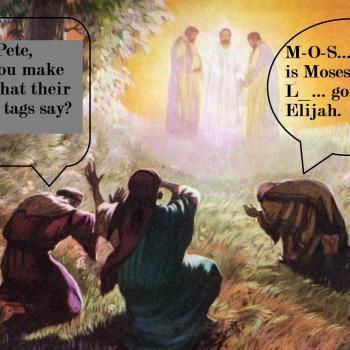Via Candida Moss, I learned that she and Joel Baden have responded to – and appropriate poked fun at – the latest mythicist volume to appear, Michael Paulkovich’s No Meek Messiah: Christianity’s Lies, Laws and Legacy.
After showing that Paulkovich’s list of 126 ancient authors he thinks should have mentioned Jesus, the list includes people who lived before Jesus, doctors, and various other kinds of authors who rarely mention their contemporaries of any sort. They do so with much humor, and so you should read the article. Here is the conclusion:
It is safe to say that there are no historians that have, to this point, included Paulkovich in their writings (and let’s be honest, the chances going forward aren’t great). What’s more, not a single mathematician, poet, philosopher, or gynecologist (probably—stupid HIPAA) refers to him even a single time.
Paulkovich has written nothing about himself—we have no biographical data on him. (In truth, it is hard to find almost anyone with less of a web presence than Michael Paulkovich—including, for the record, no Twitter account.) Though his name is on a couple of books and articles, someone else probably wrote those. At least, that’s undoubtedly what “Paulkovich” would say if we suddenly discovered a text claiming to have been written by Jesus, right?
The failure of Paulkovich to even Google subjects that he wrote about, as well as his inability to reflect on the relationship between various assertions he made, is evident from this part of the book description on Amazon:
No Meek Messiah exposes that Jesus believed in Noah’s Ark, Adam & Eve, Jonah living in a fish or whale, and Lot’s wife turning into salt. (Historian Josephus, often cited by Christians as proof of the historicity of Jesus, also claims that he as actually seen the “pillar of salt” that Lot’s wife turned into; “for I have seen it, and it remains at this day,” Josephus lied.
Jesus didn’t exist, but believed in things?
If you Google the subject of Lot’s Wife, you quickly learn that there is a mineral formation, Jebel Usdum, which is traditionally known as “Lot’s Wife.” It is obviously not a person turned to salt – the Biblical tale is an aetiological explanation of the origin of the formation – but Josephus wasn’t lying when he said he had seen it.
Jerry Coyne, unsurprisingly, finds him completely credible. By way of contrast, another atheist blogger, Steven Bollinger, has tackled the topic, and concludes, “As an atheist, I long for a much better class of atheists, atheists writing about history who are not historically illiterate.”













